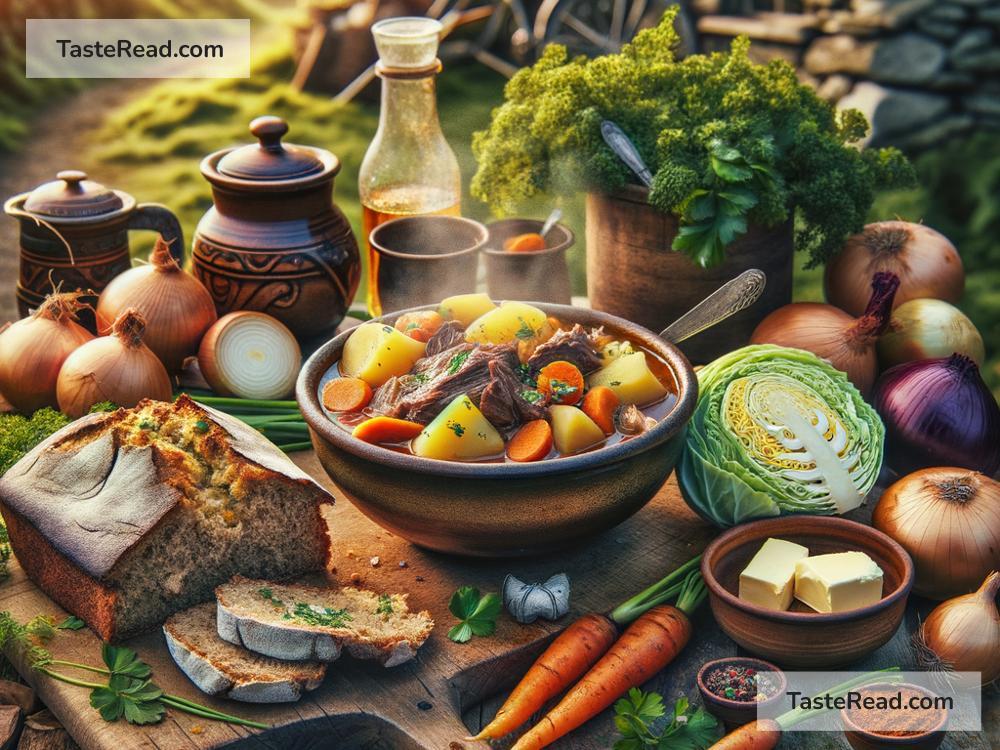Journeying Through Savory Stew Traditions in Ireland
When it comes to comfort food, few dishes can warm the heart and soul like a hearty stew. Across the world, stews have been a staple of homely cooking for centuries, but one country that truly embraces this dish is Ireland. Rich in tradition, Irish stews offer a taste of history and showcase the country’s connection to the land and its produce. Let’s take a journey through the savory stew traditions in Ireland and explore what makes them so special.
What Is Irish Stew?
At its core, Irish stew is a one-pot dish made with simple ingredients. Traditionally, it includes lamb or mutton, potatoes, onions, and carrots. These basic staples come together to create a meal that is both nourishing and delicious. Over the years, variations of the stew have been adapted to suit personal tastes and availability of ingredients, but the essence of Irish stew has remained the same: it’s a dish that reflects simplicity, comfort, and heritage.
How Irish Stew Began
The origins of Irish stew can be traced back to Ireland’s agrarian society. For many centuries, Irish families relied on farming for their livelihood. Sheep were a common livestock on farms, raised for their wool, milk, and meat. Mutton, which is meat from older sheep, was often used in cooking due to its availability and affordability. Potatoes, which famously became a staple crop after being introduced to Ireland in the late 1500s, were added as the primary carbohydrate source, along with other local vegetables.
The stew was a practical meal for the hardworking people of Ireland. It required little preparation, cooked slowly over a flame, and made use of cheap and readily available ingredients. The dish was not only affordable but filling, providing farmers and laborers with the sustenance they needed to get through long days of work.
The Symbolism of Irish Stew
Irish stew isn’t just about food – it’s a dish steeped in cultural symbolism. It represents the resilience and resourcefulness of the Irish people. During times of hardship, such as the Great Famine of the 1840s, simple, hearty meals like stew became a means of survival. Its popularity reflects the resourcefulness of making the most of what you have and celebrating humble ingredients.
As Irish immigrants traveled and settled in other parts of the world, they took their culinary traditions with them. To this day, Irish stew is enjoyed worldwide, particularly around St. Patrick’s Day, when people celebrate Irish culture through food, music, and stories.
Ingredients That Make Irish Stew Special
The unique flavors of Irish stew come from its simple yet effective combination of ingredients:
- Lamb or Mutton: Traditionally used for the stew, this meat adds richness and tenderness to the dish. Some modern recipes swap lamb for beef, but lamb remains the classic choice.
- Potatoes: Potatoes are the backbone of Irish cuisine, and they’re essential to Irish stew. They thicken the broth and add texture.
- Onions: Onions add a slightly sweet base to the stew and enhance its aromatic quality.
- Carrots: Carrots bring color and a touch of natural sweetness to the dish.
- Seasonings: Salt, pepper, and fresh herbs, like parsley or thyme, are used to season the stew. Some variations might include bay leaves or leeks for added depth.
Together, these ingredients are slow-cooked to perfection, creating a dish that is both hearty and flavorful.
Modern Twists on Irish Stew
While the classic recipe remains beloved, modern chefs and home cooks have put their own twists on Irish stew. Some people prefer adding celery, parsnips, or turnips to bring more complexity to the flavor. Others might use beef instead of lamb or include a splash of beer or red wine in the broth for extra richness.
Vegetarian and vegan versions have also become popular. These variations use mushrooms, lentils, or plant-based meat alternatives instead of lamb, while still maintaining the comforting essence of the dish.
Irish stew also pairs wonderfully with traditional Irish bread, such as soda bread, or even a pint of Guinness for a truly authentic Irish experience.
A Taste of Community and Culture
What makes Irish stew so special isn’t just its taste. It’s the sense of connection it brings. Stews are often made in large batches, shared among family and friends, and enjoyed while sitting together around the dinner table. In Ireland, food has always been about community, and Irish stew embodies this spirit.
Whether you’re in a bustling Irish pub or a quiet rural home, a bowl of stew speaks of togetherness, tradition, and hospitality.
Cooking Irish Stew at Home
If you’d like to try making Irish stew at home, worry not – it’s a forgiving recipe. Here’s a simple guide to get started:
- Heat a large pot or Dutch oven and brown your lamb or beef.
- Add chopped onions and cook until softened.
- Pour in water, stock, or even a splash of beer, and bring to a gentle simmer.
- Add potatoes, carrots, and any other vegetables you like, along with thyme, salt, and pepper.
- Cover and let the stew cook slowly for 1-2 hours, stirring occasionally.
- Serve hot with crusty bread.
Conclusion
Irish stew is more than just a meal; it’s part of Ireland’s story. It reflects the resilience of its people and their love for simple, hearty, and nourishing food. By cooking or enjoying this dish, you’re tasting a piece of Irish history while also experiencing the flavors of a land rich in tradition. So, why not make your own Irish stew and take a culinary journey through Ireland’s past? You’ll discover the warmth, comfort, and love that has kept this dish alive for generations.


